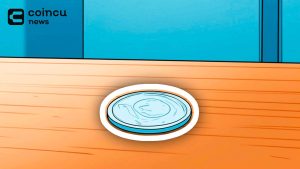Layer 2 Scroll Protocol Upgrade Will Be Launched On The Mainnet On February 21
Key Points:
- Scroll announces its first major upgrade to cut Ethereum bridging costs by up to 50%.
- The Scroll protocol upgrade optimizes gas usage and contract merging, launching via Scroll Multisig on February 7, 2024, with a 14-day upgrade window.
- Scroll’s zkEVM feature enables seamless deployment of Ethereum projects without code changes.
Scroll, a Layer 2 protocol, has announced its first major upgrade since the launch of its mainnet in October 2023.
Read more: Scroll Airdrop Guide: Potential Big Airdrop Projects For Early 2024
Scroll Protocol Upgrade: Cutting Ethereum Bridging Costs
The Scroll protocol upgrade aims to enhance the cost efficiency for users bridging funds from Ethereum to Scroll, with anticipated reductions in bridging costs of up to 50%.
Scheduled to launch through the Scroll Multisig contract on February 7, 2024, the upgrade focuses on optimizing gas usage and merging contracts to save call costs.
Notably, this Scroll protocol upgrade solely impacts the Scroll contract and does not involve upgrading the sequencer and follower nodes. It is designed to be backward compatible, meaning existing applications on Scroll should require no modifications.
Following the Scroll protocol upgrade launch, there will be a 14-day time limit on upgrade transactions, leading to the execution of the upgrade on the Scroll mainnet around February 21, 2024.
Scroll’s zkEVM Enhances Developer Experience
Prior to this development, Scroll concentrated on community building and fostering developer engagement. Over 100 projects, spanning infrastructure, DeFi, and Web3 games, have been deployed on the platform.
What distinguishes Scroll is its zkEVM, which provides a user experience nearly identical to that of Ethereum. This feature enables developers to seamlessly clone and deploy their Ethereum projects on Scroll without altering the underlying codebase.
| DISCLAIMER: The information on this website is provided as general market commentary and does not constitute investment advice. We encourage you to do your own research before investing. |




















